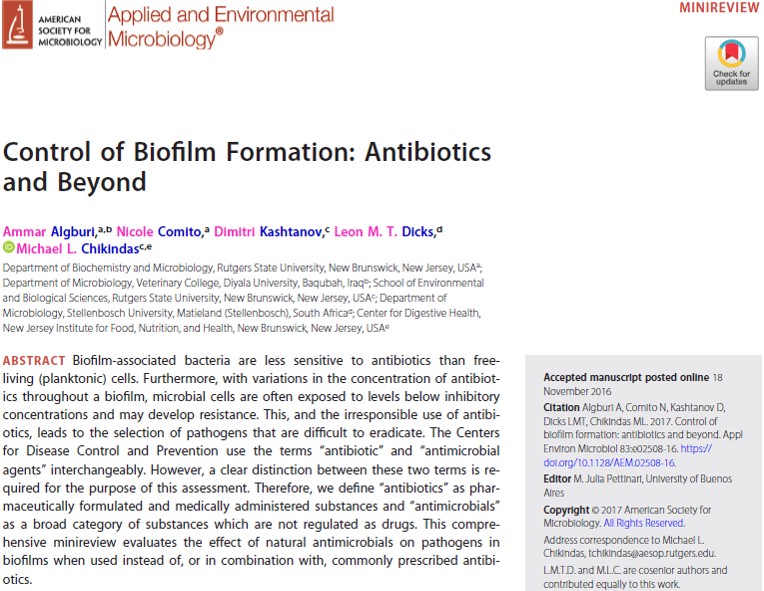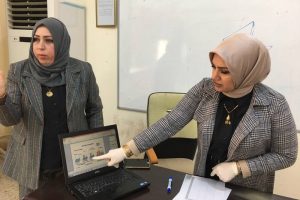
Control of Biofilm Formation: Antibiotics and Beyond
Ammar R. Algburi, a Ph.D. lecturer in Biology and Biotechnology Dept./ C ollege of Science – University of Diyala, published a Minireveiw titiled as "Control of biofilm formation: Antibiotics and beyond". This manuscript was published in Applied and Enviromental Microbiology Journal (Americam society for Microbiology group) which has an impact factor 4.31. This journal is issued fron USA.
Biofilm-associated bacteria are less sensitive to antibiotics than free-living (planktonic) cells. Furthermore, with variations in the concentration of antibiotics throughout a biofilm, microbial cells are often exposed to levels below inhibitory concentrations and may develop resistance. This, and the irresponsible use of antibiotics, leads to the selection of pathogens that are difficult to eradicate. The Centers for Disease Control and Prevention use the terms “antibiotic” and “antimicrobial agents” interchangeably. However, a clear distinction between these two terms is required for the purpose of this assessment. Therefore, we define “antibiotics” as pharmaceutically formulated and medically administered substances and “antimicrobials” as a broad category of substances which are not regulated as drugs. This comprehensive minireview evaluates the effect of natural antimicrobials on pathogens in biofilms when used instead of, or in combination with, commonly prescribed antibiotics.






